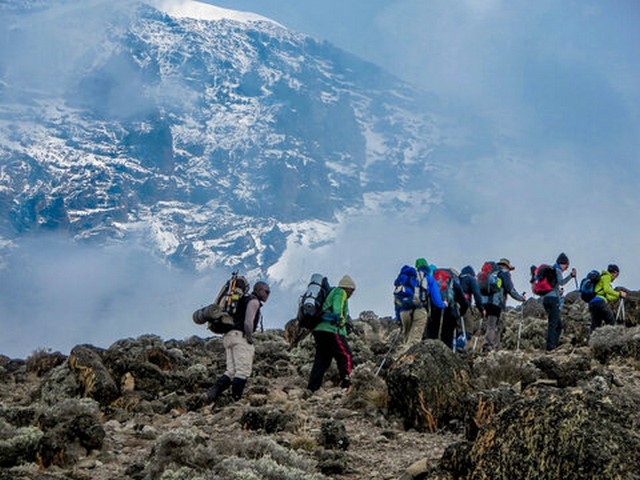Best Trekking Safety Practices For Kilimanjaro Climbs
As the towering peak of Mount Kilimanjaro beckons adventurous souls from around the globe, the importance of adhering to the best trekking safety practices cannot be overstressed. At Kilimanjaro Centre for Trekking and Ecotourism (KCTE), we believe that the magical experience of climbing Kilimanjaro should be matched with utmost safety and preparedness. Whether you’re a seasoned mountaineer or a determined beginner, understanding and implementing these safety practices ensures that your journey up this majestic mountain is not only memorable but also secure.
Why Focus on Safety?
Climbing Kilimanjaro is a formidable challenge that requires physical stamina, mental perseverance, and a deep respect for the natural elements. With its varying climates and altitudes that reach up to 5,895 meters above sea level, the highest point in Africa presents unique challenges that demand preparedness and caution.
Preparing for Your Kilimanjaro Adventure
Health and Fitness
Assess Your Fitness Level: Climbing Kilimanjaro does not require technical climbing skills, but good physical condition is a must. Start by assessing your fitness level and consult with your physician before embarking on this adventure.
Train Accordingly: Engage in regular cardiovascular activities like hiking, running, or cycling. Strength training and altitude training can also greatly benefit trekkers looking to conquer Kilimanjaro.
Gear Up for Success
Choose the Right Gear: Your gear is your first line of defense against the elements. Invest in good quality, insulated, and waterproof clothing, a comfortable yet sturdy pair of hiking boots, and a sleeping bag suitable for extreme cold.
Pack Smart: Balance between packing light and ensuring you have all essentials – including a first aid kit, necessary medications, sun protection, and thermal layers.
On the Trail: Climbing Kilimanjaro Safely
Acclimatization: The Key to Avoiding Altitude Sickness
Understand the Risks of High Altitude: As you ascend, the air becomes thinner, and oxygen levels decrease, which can lead to altitude sickness.
Climb Slowly: One of the golden rules in high-altitude trekking is to ascend slowly. This gives your body enough time to adjust to the altitude, reducing the risk of altitude sickness.
Hydration and Nutrition
Stay Hydrated: Dehydration can exacerbate the symptoms of altitude sickness. Drink plenty of water and avoid diuretics such as caffeine and alcohol.
Keep Energized: Consume high-energy, easily digestible foods. Carbohydrates are your friend on the mountain!
Listen to Your Body
Watch for Symptoms: Be aware of how your body feels. Symptoms like headaches, nausea, and dizziness should not be ignored.
Communicate with Your Guide: At KCTE, our guides are trained to monitor trekkers for any signs of illness and make crucial decisions about proceeding or descending if necessary.
Choosing the Right Guide and Tour Operator
The Importance of Experienced Guides
Certified and Experienced Guides: KCTE provides skilled guides who are well-versed in Kilimanjaro’s routes and adept in handling altitude-related challenges. They are the mountain’s unsung heroes and your key to a safe and successful summit.
Why Choose KCTE?
Safety First: Our itineraries are crafted with safety as a priority, allowing ample time for acclimatization and providing comprehensive pre-trek briefings.
Sustainable Practices: We believe in preserving the beauty of Kilimanjaro for future generations through eco-friendly practices and promoting local culture.
After the Climb: Recovery and Reflection
Post-Climb Care: After descending, give your body time to recuperate with proper rest and nutrition. Reflect on your journey, noting any lessons learned for future treks.
Share Your Experience: Inspire others by sharing your Kilimanjaro story. The challenges overcome and the summit reached can motivate future climbers to embark on their own journeys.
Frequently Asked Questions
Q: What is the best time of year to climb Kilimanjaro?
A: The best times are during the dry seasons, January to March and June to October.
Q: How long does it take to climb Kilimanjaro?
A: It typically takes about 5 to 9 days, depending on the route and speed of ascent.
Q: Do I need special insurance for climbing Kilimanjaro?
A: Yes, you should have travel insurance that covers high-altitude trekking.
Q: Can beginners climb Kilimanjaro?
A: Yes, beginners can climb Kilimanjaro; however, proper preparation and physical conditioning are essential.
In Conclusion: Safety Ensures Summit Success
At Kilimanjaro Centre for Trekking and Ecotourism (KCTE), your safety is our top priority. By following the best trekking safety practices, you set the stage for a successful and unforgettable ascent of Kilimanjaro. Remember, the mountain is not just a physical challenge but a journey of self-discovery and resilience. Ready to take on the challenge? Book your Kilimanjaro climbing adventure with KCTE today and stand atop Africa, safe and triumphant!
Let Kilimanjaro inspire your spirit, challenge your limits, and reward you with the most breathtaking views and experiences. Climb with us, where every step is a safe step towards the roof of Africa!




